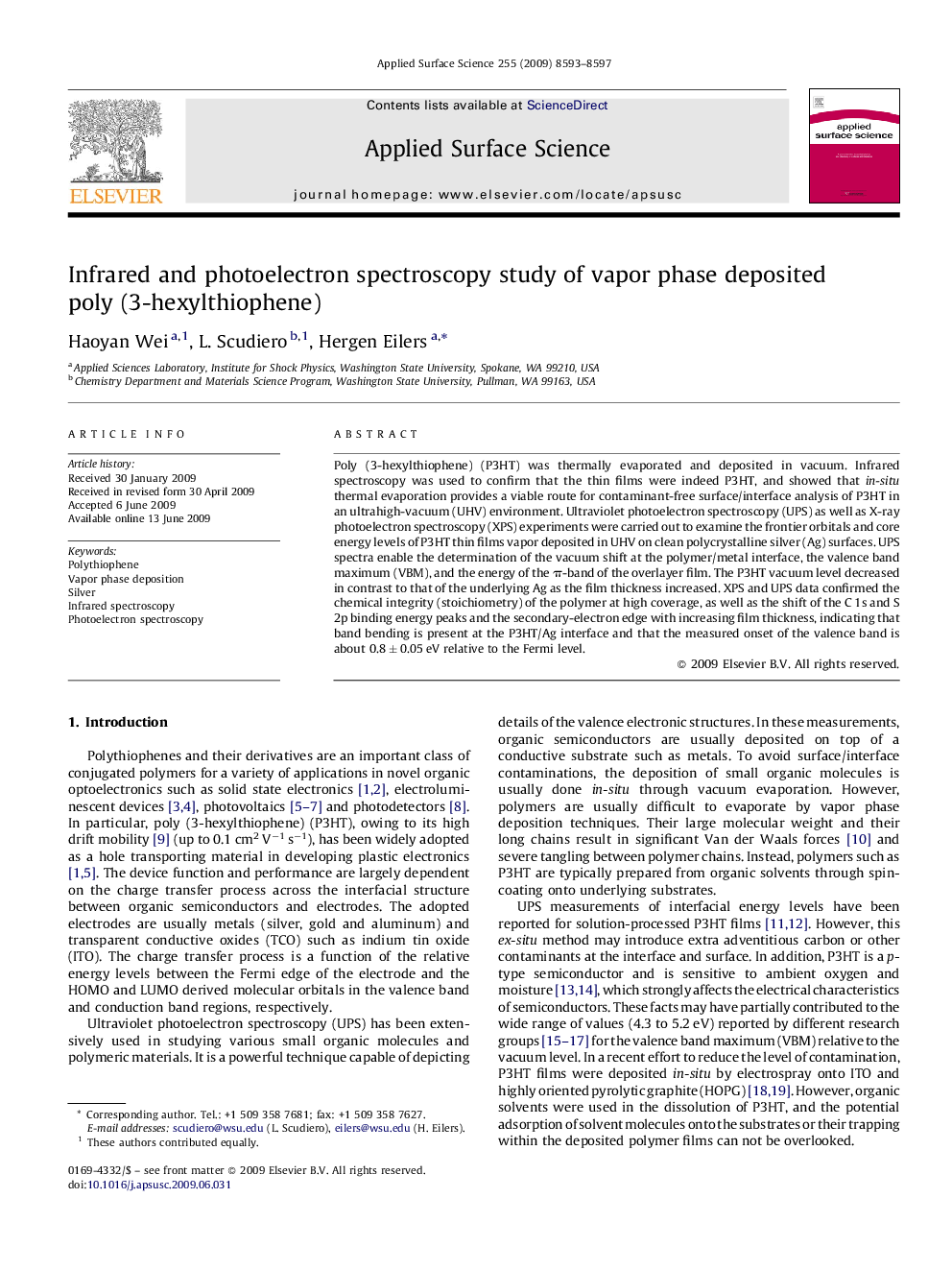| Article ID | Journal | Published Year | Pages | File Type |
|---|---|---|---|---|
| 5362044 | Applied Surface Science | 2009 | 5 Pages |
Abstract
Poly (3-hexylthiophene) (P3HT) was thermally evaporated and deposited in vacuum. Infrared spectroscopy was used to confirm that the thin films were indeed P3HT, and showed that in-situ thermal evaporation provides a viable route for contaminant-free surface/interface analysis of P3HT in an ultrahigh-vacuum (UHV) environment. Ultraviolet photoelectron spectroscopy (UPS) as well as X-ray photoelectron spectroscopy (XPS) experiments were carried out to examine the frontier orbitals and core energy levels of P3HT thin films vapor deposited in UHV on clean polycrystalline silver (Ag) surfaces. UPS spectra enable the determination of the vacuum shift at the polymer/metal interface, the valence band maximum (VBM), and the energy of the Ï-band of the overlayer film. The P3HT vacuum level decreased in contrast to that of the underlying Ag as the film thickness increased. XPS and UPS data confirmed the chemical integrity (stoichiometry) of the polymer at high coverage, as well as the shift of the C 1s and S 2p binding energy peaks and the secondary-electron edge with increasing film thickness, indicating that band bending is present at the P3HT/Ag interface and that the measured onset of the valence band is about 0.8 ± 0.05 eV relative to the Fermi level.
Related Topics
Physical Sciences and Engineering
Chemistry
Physical and Theoretical Chemistry
Authors
Haoyan Wei, L. Scudiero, Hergen Eilers,
